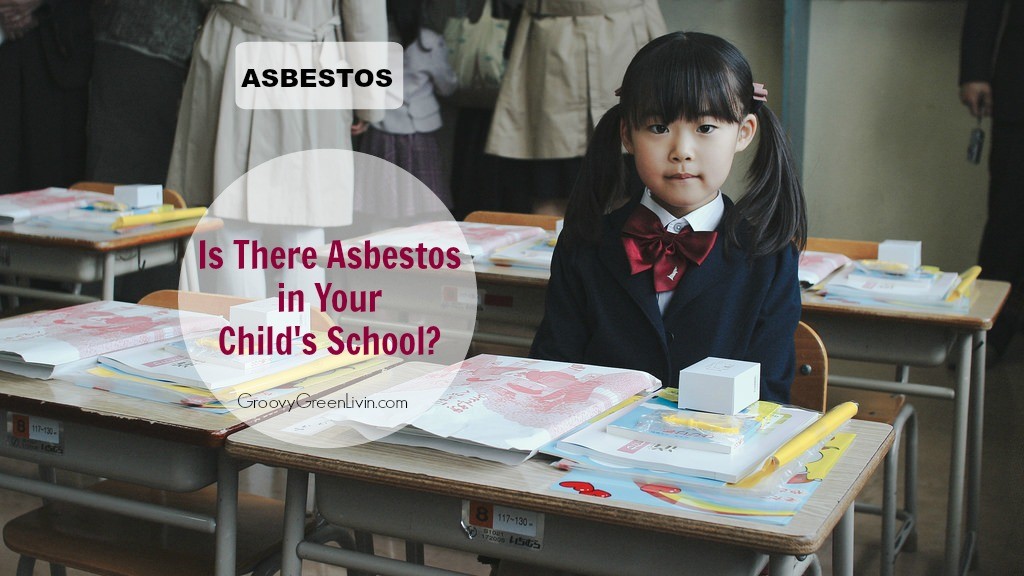This post about was originally published at Moms Clean Air Force [2]
Do you know if your child’s school building has asbestos?
When we send our children off to school each morning there’s an underlying assumption that they are headed to a safe and healthy environment for learning. Unfortunately that’s not always the case.
Asbestos, an issue that many of us thought to be resolved, continues to plague schools and pose a health threat in classrooms throughout the country.
If a school was built before the 1980s [3], it’s likely that it contains some form of asbestos. During that time it was used throughout schools for everything ranging from insulation, pipe wrap, ceiling tiles, floor tiles, coatings, roof shingles [4] and drywall. It was also used as table tops, theater fire curtains, and backing on chalk boards [4]. It still exists in many of our schools and continues to pose a significant public health threat [5].
Asbestos isn’t harmful unless it’s disturbed (through routine repairs or renovations) or starts to deteriorate. Once this happens the dust enters the air and can be inhaled by students, teachers and other school employees. Those exposed to the asbestos dust are at an increased risk for mesothelioma [6], lung cancer and other lung ailments.
The Environmental Protection Agency “… has determined that exposure to asbestos in school buildings poses a significant hazard to public health. Exposure to asbestos fibers can lead to serious and irreversible diseases.” It is a known human carcinogen and its negative health effects can continue even after the exposure has stopped.
Asbestos is responsible for 12,000-15,000 deaths [7] in the United States each year. Although it is banned in 54 countries, it has not been banned in the US.
There is no safe level of exposure.
Is there a connection between asbestos and asthma?
Asbestos is considered an indoor air pollutant and also a human carcinogen [8]. Indoor air pollutants are known to be environmental factors that trigger asthma symptoms.
Asthma is a chronic lung disease [9] that causes repeated episodes of wheezing, breathlessness, chest tightness, and nighttime or early morning coughing [10]. An average of one out of every 10 [11] school-aged children has asthma, the most common chronic disease of childhood. Asthma is generally caused by a combination of genetics and environmental factors.
An asthma attack [10] can occur when someone with asthma is exposed to and asthma trigger such as such as cigarette smoke, dust mites, car exhaust or smog. While there is no definitive correlation between asthma and asbestos exposure, it’s impossible to rule out that it could trigger asthma-like symptoms [12].
What’s being done about asbestos is schools?
In 1986 legislators enacted the Asbestos Hazard Emergency Response Act (AHERA) [13] to require public school districts [14] and non-profit schools including charter schools and schools affiliated with religious institutions to:
- Inspect their schools for asbestos-containing building material
- Prepare management plans and to take action to prevent or reduce hazards
A recent report [7] published by United States Senators Edward Markey (D-MA) and Barbara Boxer (D-CA) determined that the passage of AHERA in 1986 has done little to protect our children from the asbestos issue still prevalent in our schools.
In March of 2015 Senators Markey and Boxer [7] sent letters to the governors of all 50 states to ask whether they’ve been implementing and enforcing AHERA. They received responses from only 20 of the 50 states. Their findings indicated that states are not in compliance with the inspections required by AHERA and asbestos issues continue to trouble many of our country’s aging schools.
The failure of 30 states to respond and the ambiguity in the responses from the states that did respond prompted the Senators to propose a set of recommendations to strengthen AHERA and to raise awareness about the large problem in the United States.
Their recommendation [7] is to amend The Asbestos Information Act of 1988 (which required a one-time publication of asbestos-containing products) to provide consumers with access to current information about asbestos-containing products. They also propose strengthening the original AHERA and make funds available for AHERA enforcement.
This is progress, but we have a long way to go before our schools are safe for our children and school employees. We can do better. We have to do better.
Do you know if there’s asbestos in your child’s school?
P.S. If you liked this post you might enjoy our Groovy Green Livin Newsletter [15]. Receive new posts and special opportunities delivered right to your inbox! Sign up HERE [15].
photo credit: SAKURAKO – Entrance ceremony. [Explored] [16] via photopin [17] (license) [18]
